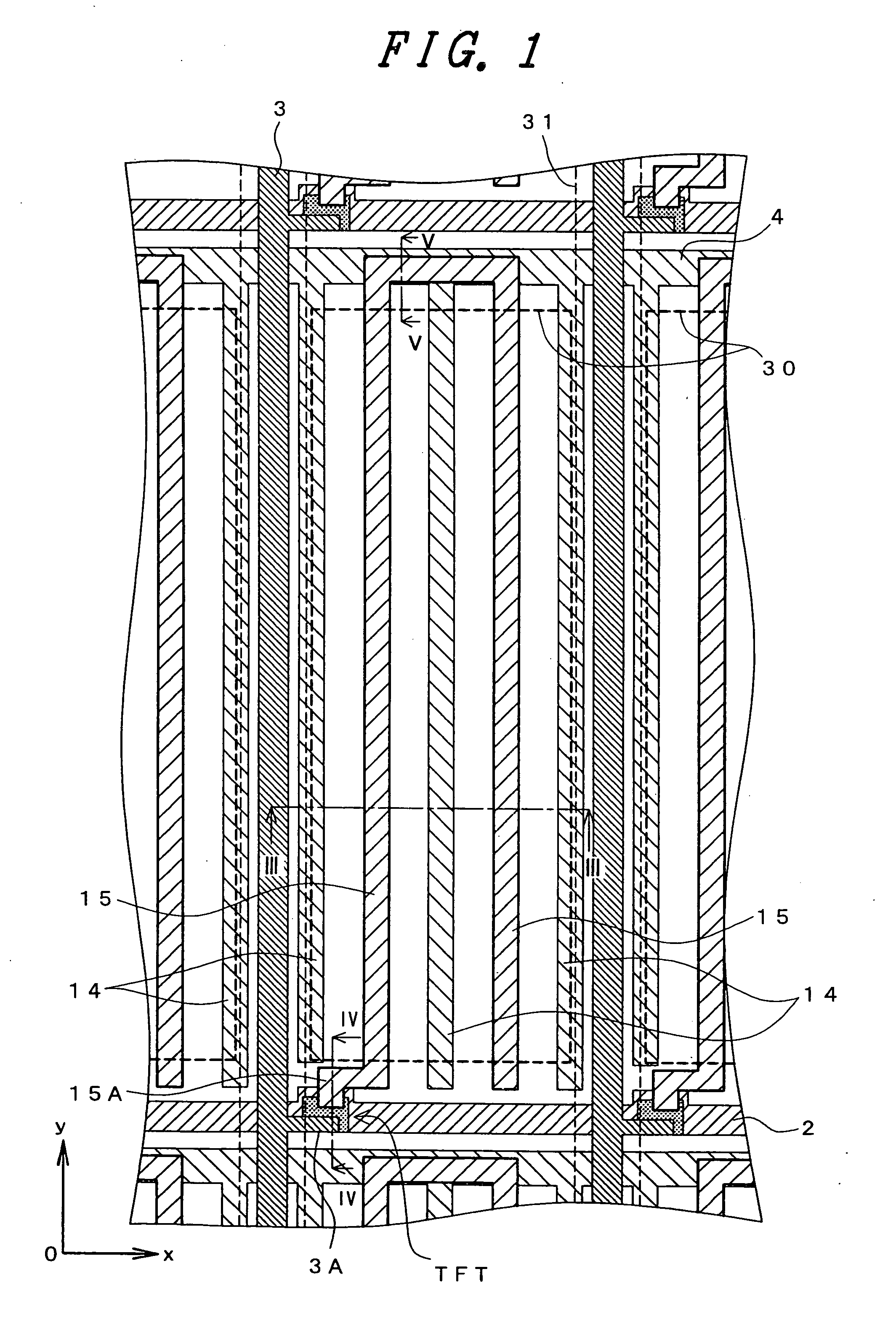Active-matrix liquid crystal display
a liquid crystal display and active matrix technology, applied in non-linear optics, instruments, optics, etc., can solve the problems of excessive excessive power consumption or the size of the drive circuit, and the vertical smear is extending along the video signal line on the display surface, so as to prevent the load on the drive circuit from increasing, reduce the capacitance between the shield electrode and the video signal line, and minimize the vertical smear
- Summary
- Abstract
- Description
- Claims
- Application Information
AI Technical Summary
Benefits of technology
Problems solved by technology
Method used
Image
Examples
embodiment 1
[0056]FIG. 2 is a diagram showing the configuration of one Embodiment of the liquid crystal display device of the present invention and its peripheral circuits.
[0057] In the figure, liquid crystal display device 1 has as its enclosure a transparent substrate 1A and a transparent substrate 1B with a liquid crystal layer interposed therebetween. On the surface of the transparent substrate 1A, which is a so-called lower substrate, on the liquid crystal layer side, are formed scan signal lines 2 and reference signal lines 4 that extend in the x direction in the figure and are parallelly arranged in the y direction. The scan signal lines 2 and the reference signal lines 4 are arranged alternately such that a first reference signal line 4 is provided close to a first scan signal line 2 in the (−) y direction, a second scan signal line 2 is greatly spaced from the first reference signal line 4 in the (−) y direction, a second reference signal line 4 is provided close to the second scan si...
embodiment 2
[0090] A second embodiment will be described centering on its differences from Embodiment 1.
[0091]FIG. 14 is a schematic diagram corresponding to FIG. 2. what differs from the configuration of FIG. 2 is, first, that the reference signal lines 4 and the reference electrodes 14 are not formed on the lower substrate 1B. Hence, instead of the storage capacitor Cstg used in Embodiment 1, an additional capacitor Cadd is provided in each pixel (These are not shown).
[0092] On the transparent substrate 1B on the liquid crystal layer side, a shield electrode 32 that also serves as the reference electrodes 14 are formed to overlap the video signal lines 3 extending in the y direction in the figure and adjacently arranged in the x direction. The shield electrode 32 that also serves as the reference electrodes 14 are also arranged at the center of the pixel area, extending in the Y direction. The plan view arrangement of the shield electrode 32 functioning also as the reference electrodes is s...
embodiment 3
[0102] In the third embodiment, the shield electrode 32 that also serves as the reference electrodes 14 is made of a metal such as Cr.
[0103] The disadvantage of Embodiment 2 is that because the shield electrode 32 serving also as the reference electrodes 14 is made of ITO, the part of the shield electrode 32 extending through the center of each pixel area does not block light but transmits it, deteriorating the contrast. If a light shielding layer is provided over the part of the shield electrode 32 at the center of the pixel, a deteriorated contrast can be avoided, but other problems arise including degraded aperture ratio and reduction in margin for the alignment between the upper and lower substrates.
[0104] Hence, the shield electrode 32 serving also as the reference electrodes 14 are made of a metallic material, so that the part of the shield electrode 32 at the center of the pixel has a light blocking capability and thus can improve the contrast without obviating the advantag...
PUM
| Property | Measurement | Unit |
|---|---|---|
| width | aaaaa | aaaaa |
| reflectance | aaaaa | aaaaa |
| width | aaaaa | aaaaa |
Abstract
Description
Claims
Application Information
 Login to View More
Login to View More - R&D
- Intellectual Property
- Life Sciences
- Materials
- Tech Scout
- Unparalleled Data Quality
- Higher Quality Content
- 60% Fewer Hallucinations
Browse by: Latest US Patents, China's latest patents, Technical Efficacy Thesaurus, Application Domain, Technology Topic, Popular Technical Reports.
© 2025 PatSnap. All rights reserved.Legal|Privacy policy|Modern Slavery Act Transparency Statement|Sitemap|About US| Contact US: help@patsnap.com



